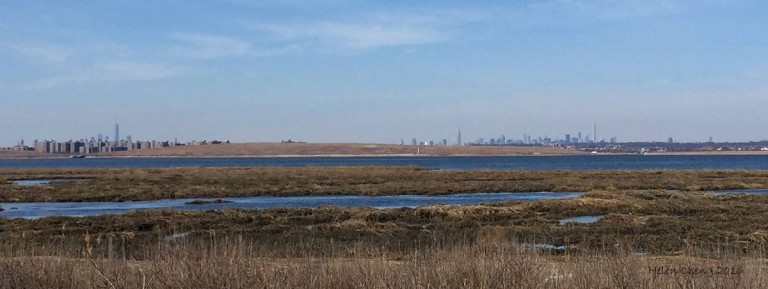PHOTO: The survey is part of a joint project with Princeton University and the Science and Resilience Institute @ Jamaica Bay. Courtesy of Helen Cheng
By Michael V. Cusenza
Scientists and researchers have been reaching out to Jamaica Bay-area residents, urging them to complete an online survey that is part of a joint flood-protection project between Princeton University and the Science and Resilience Institute @ Jamaica Bay.
The study’s purpose, according to the SRI@JB, Its purpose is to better understand how residents are affected by flooding and how they value different flood protection options. Its goal is to also understand how public programs can best support the needs and values of the Jamaica Bay community.
The survey takes about 10 to 15 minutes to complete, according to researchers. Responses are anonymous and confidential. For your participation, you will be entered into a raffle for a $500 Amazon gift card. Also, you may nominate a local organization to receive $1,000.
The survey can be found at https://princetonsurvey.az1.qualtrics.com/jfe/form/SV_2uuPHmDLQ4oJKQd.
Flood protection took on a greater significance on Oct. 29, 2012. As the SRI@JB puts it, “for communities around Jamaica Bay, Superstorm Sandy’s landfall was a tragic reminder of how much damage a large-scale and rapidly moving disturbance can make. Lives were lost. Transportation, food, and energy were disrupted. Physical and natural infrastructure was destroyed. But successful stories of recovery in the aftermath of Hurricane Sandy were a more hopeful reminder of the many ways that people, plants, and animals can potentially re-group, recover, and sometimes thrive in the face of adversity. After Sandy, the human and natural worlds bounced back in various degrees, helped in part through coordinated and innovative efforts of community groups, local governments, the private sector, and state and federal agencies. But Sandy is just the latest catastrophic event in a coming century of unforeseen stresses and shocks. Resilience is about finding ways to recover more quickly and with less disruption not only from future coastal storms but also from other disturbances with intersecting and compounding effects, such as those related to urbanization and climate change.”
Putting resilience into practice
According to the institute, as a vision of the future, a more resilient Jamaica Bay would be able to withstand shocks and stresses to the social, physical, and ecological systems that support the well-being of living populations. To put resilience into practice and meet this vision we need to better understand how systems respond to disturbance but also make decisions about what constitutes well-being and what system interventions might get us there. This is not a straightforward effort. Resilience in practice is interpreted in various ways by different thinkers. Ecologists, for example, extend resiliency practice to the restoration of coastal wetland habitats that can help strengthen the capacity of the ecosystem to absorb stresses or shocks. Resilient local ecosystems can support well-being by protecting the biodiversity of a region and helping meet a range of human needs such as protecting environmental quality, reducing natural disaster risk, adapting to climate change, and enjoying recreation and natural amenities. Distinct from ecologists, engineers often emphasize a different aspect of resilience. They may envision resiliency practice as a structurally defensive notion—for example, building seawalls or abatements to defend against storm surge pushing into the bay. Furthering the complexity, communities of residents may have a still different concept of resiliency practice that focuses priority on strengthening the capacity of the human community to cope with stressors and shocks.
michael@theforumnewsgroup.com

